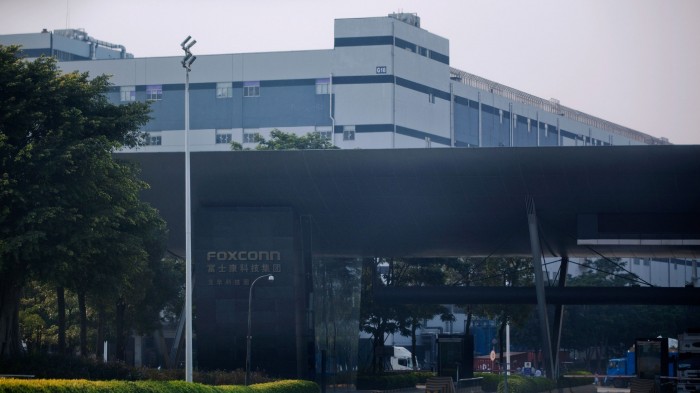Foxconn Wants to Become a Global Force in Clean Energy
The primary reason for Taiwanese manufacturer Foxconn’s acquisition of Sharp, the struggling electronics giant, is the iPhone supplier’s desire to begin producing high-end smartphone screens, in particular the organic light-emitting diodes that will be used by the next generation of Apple devices. But there’s another driver of the $3.5 billion deal as well: Foxconn, previously best-known in the West for employee suicides and toxic water pollution, wants to become a leader in China’s clean-energy revolution.
Sharp first started making solar panels in 1959, and in the early 2000s was the world’s largest producer in the volatile industry. Since then it has been eclipsed by panel makers in China, and its energy solutions unit lost $45 million in the fourth quarter of 2015. It’s not entirely clear what will become of Sharp’s solar business under Foxconn control. But Sharp has been dabbling in related energy technologies for years, such as energy management devices and energy storage systems. And it’s clear that Foxconn’s enigmatic CEO Terry Gou intends to bolster Foxconn’s energy business—both in supplying clean energy for its own operations and developing solar projects overseas.
Last year SBJ Cleantech, the joint venture between Foxconn, Japan’s SoftBank, and Indian conglomerate Bharti Enterprises signed an agreement to build two gigawatts of solar power capacity in the Indian state of Andhra Pradesh. The three companies also recently announced plans to invest $20 billion in India’s renewable energy market, primarily solar projects.

Foxconn is also joining with its number-one customer, Apple, to develop renewable sources for the energy its factories use in China. By 2018, Foxconn plans to install 400 megawatts of solar power capacity in China, enough to offset the carbon emissions from its mainland operations. “Harnessing renewable energy is a key pillar in our social and environmental responsibility strategy,” said Gou. If its clean energy ambitions pan out, Foxconn could become an unlikely poster child in China’s national drive to replace coal-fired power plants with renewables.
(Read more: Bloomberg, Reuters, Wall Street Journal)
Keep Reading
Most Popular
Large language models can do jaw-dropping things. But nobody knows exactly why.
And that's a problem. Figuring it out is one of the biggest scientific puzzles of our time and a crucial step towards controlling more powerful future models.
The problem with plug-in hybrids? Their drivers.
Plug-in hybrids are often sold as a transition to EVs, but new data from Europe shows we’re still underestimating the emissions they produce.
Google DeepMind’s new generative model makes Super Mario–like games from scratch
Genie learns how to control games by watching hours and hours of video. It could help train next-gen robots too.
How scientists traced a mysterious covid case back to six toilets
When wastewater surveillance turns into a hunt for a single infected individual, the ethics get tricky.
Stay connected
Get the latest updates from
MIT Technology Review
Discover special offers, top stories, upcoming events, and more.